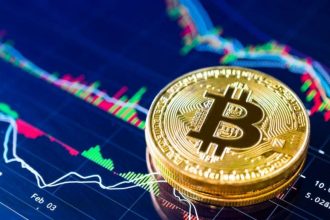The Pump.fun token sale was supposed to go live by late June, but that plan quietly fell apart. Without any public announcement, the Solana-based meme platform postponed its long-anticipated token auction once again. The latest internal target is now sometime in mid-July, though even that remains unofficial. With each delay, speculation grows, and so do the questions around how much of the token supply will actually be accessible to the users who helped build the platform’s momentum in the first place.
Delay, Uncertainty, and Pre-Sale Tension
Pump.fun rose to relevance by offering users a simple way to create and trade memecoins using bonding curves. Tokens are launched instantly, and their price climbs with every buy order, allowing early traders to benefit from demand spikes. This approach helped Pump.fun facilitate the creation of thousands of tokens and reportedly generate over $760 million in revenue, without launching a native token.
But that token, PUMP, was eventually promised. And with a $1 billion raise expected at a $4 billion valuation, anticipation reached new highs. Pre-market trading on Aevo, where PUMP futures began trading with thin liquidity, pushed the token’s price above $7 briefly. Yet there’s no on-chain proof of a live token or an official sale mechanism. Instead, on-chain data shows stablecoin deposits moving into wallets linked to Pump.fun, suggesting that private placements may already be underway behind the scenes.
This private activity has shifted how many users view their chances. With up to 60% of the total supply reportedly going to institutional buyers, everyday traders are left wondering if they’ll be left out once again. For anyone trying to assess risks in this evolving market, having a resource for unbiased crypto investing insights is essential, especially when retail access is unclear, and token launches become less transparent with time.
Legal Pressure and Community Fallout
In June, legal action was filed against Pump.fun by Burwick Law and Wolf Popper. The class-action suit claims the platform operates as an unlicensed securities exchange and enables predatory behaviors. The core of the complaint points to how some wallets allegedly created tokens in bulk, drew in retail participants, and exited early, often within minutes. These concerns, if proven, could set a precedent for how bonding curve platforms are treated under U.S. law.
This lawsuit might explain part of the reason for the latest token sale delay. With the team and its founder silent across social platforms, especially after the main Pump.fun X account was suspended, confidence has dipped. Legal uncertainty combined with limited public communication tends to push cautious users away, while speculation remains high among those chasing early market entries.
What We Know About the Token Model
Though nothing official has been published in a whitepaper, DWF Labs and other insiders have reported the following breakdown for the PUMP token:
Tokenomics Snapshot (Unofficial)
- Total Supply: 1 trillion PUMP
- Private Sale: 60% to early backers and funds
- Public Sale: 25% possibly unlocked at launch
- Airdrop Allocation: 10% for early user activity
- Target Valuation: $1B raise at $4B fully diluted value
Some see this distribution as aggressive. With most of the supply potentially locked up by insiders or team-held reserves, many feel the public allocation could be too limited. That view is reinforced by the absence of any on-chain contract or claim portal, even as private wallets appear to receive early access.
Community Sentiment: Excitement Meets Distrust
The platform’s impact on Solana memecoin culture is undeniable, but user sentiment is divided. Some creators with large audiences still praise Pump.fun for letting them launch ideas and tokens without needing a development team. Even when their tokens failed, they felt the experience was worthwhile and helped attract attention to smaller creators on Solana.
Other users, though, are more skeptical. They point to the repetitive wallet behaviors; launch, inflate, and exit, as signs of exploitation. Many are also calling out the lack of updates, with some beginning to shift attention to alternative launchpads. What started as excitement is now a mix of confusion and concern, especially around whether any airdrop will genuinely reward activity or just favor volume.
Traders are also questioning the platform’s revenue model. With over $2 million in daily fee volume, some believe the PUMP token could offer buyback-based value. But without knowing how the revenue will be allocated, it’s unclear whether holding the token will offer more than speculation. Still, the buzz continues, even if the clarity doesn’t.
The Path Forward for the Pump.fun Token Sale
If Pump.fun can launch PUMP by mid-July and share clear eligibility rules, it may regain trust. But that window is narrowing. The platform has shown that it can survive, and thrive, without a native token. But now that one is on the horizon, the expectations are higher, and the questions deeper.
The Pump.fun token sale has become about more than a meme token, it’s now a test of whether viral platforms can balance community and capital without losing one to serve the other. And for anyone serious about navigating token sales in today’s environment, keeping close track of how projects balance these trade-offs is becoming a core part of informed crypto investing.















